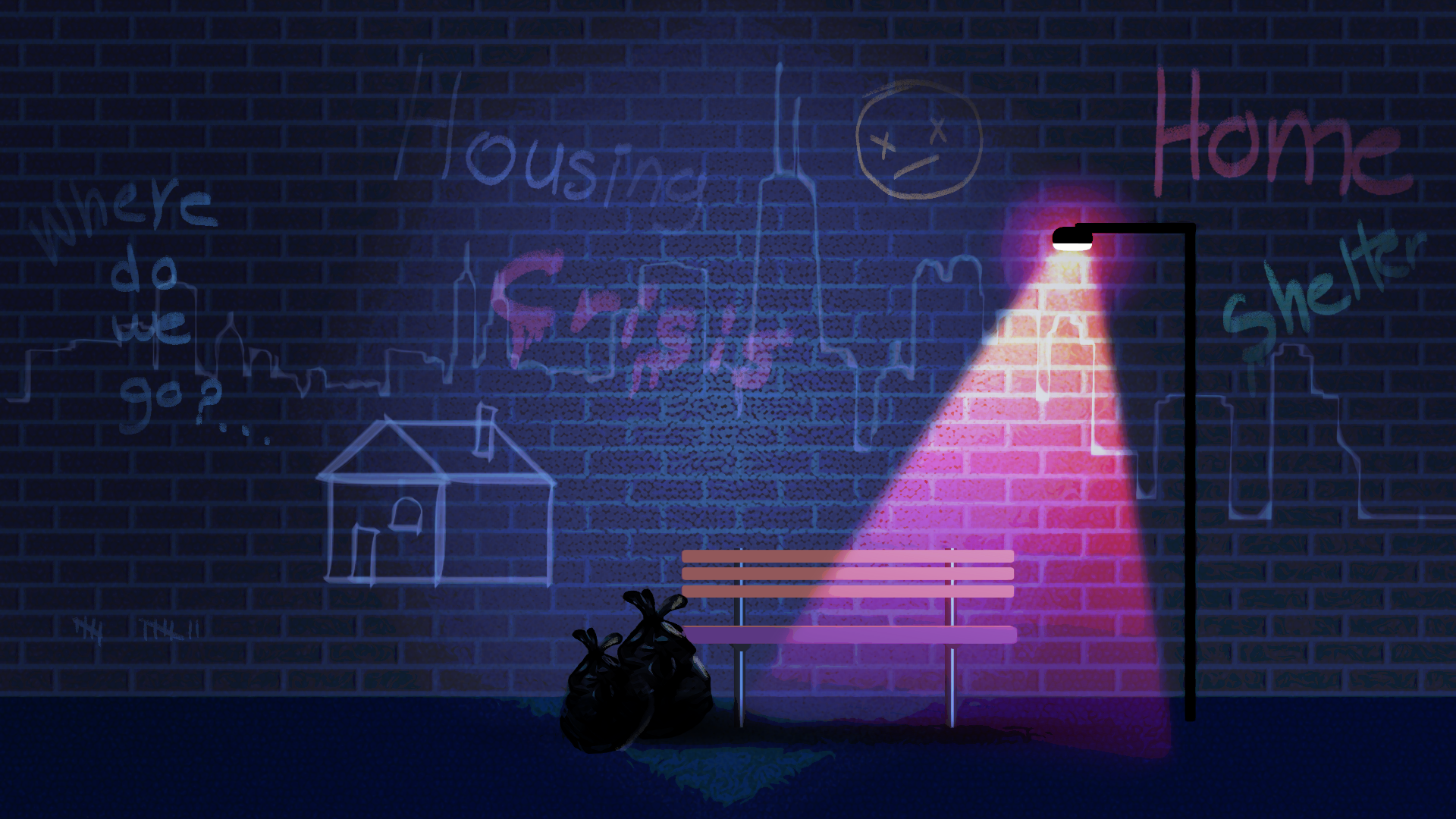Since the COVID-19 pandemic, there's been a lot of talk about the homeless population in Los Angeles. There has likely been an increase in the number of homeless people in the city, and a lot of coverage of homeless camps being shut down, cleaned up or making people feel unsafe.
So, we decided to crunch the numbers to see if there's been an increase in homeless-involved crime. ABC7 also talked to some experts to get their thoughts on what some of these numbers might mean, and how misconceptions might affect the response to solving the homeless crisis.
Do crimes involving homeless people make up a lot of the crime in L.A.?
The percentage isn't huge, but it's 'disproportionately high.'
Crime involving homeless - that is, where either the suspect, the victim or both were homeless - makes up less than a tenth of all crime in L.A., according to an ABC7 analysis of LAPD crime data last updated June 16. About 6% in 2018, 7% in 2019, and 8% in 2020 and so far in 2021.
Crimes involving homeless people tend to make up a larger share of violent crime. About 11% of violent crime in the city of L.A. involved a homeless person in 2018, 13% in 2019, 15% in 2020 and so far in 2021.
However, property crime involving homeless people only made up 2-3% of all property crime in the city for 2018 through 2021 so far.
The numbers show that homeless people are victims of crime at about half the rate that they are suspects, though this is likely an undercount. (See question #5 for more on this.)
The homeless population of L.A. is a little over 40,000, as of the most recent homeless count released back in 2020, which is about 1% of the population. When comparing that to the homeless crime data of 8% for the most recent years it's "disproportionality high," according to Los Angeles Police Department Homeless coordinator, Commander Donald Graham.
Has there been a spike in overall homeless crime?
Citywide, crime involving homeless people has remained steady for the past few years, but the time during the COVID-19 pandemic needs context.
Crime involving homeless people increased between 2018 and 2019, but numbers between 2019 and 2020 held almost perfectly steady, increasing by less than half of 1%.
This is in spite of the fact that homelessness increased 14% in the city of Los Angeles in 2019 and 16% in 2020. Homelessness is also expected to increase because of the recession caused by the pandemic - though LAHSA did not do a homeless count this year because of the pandemic.
To look at it a bit differently, in 2018 there were 35 crimes involving homeless people per day across the whole city. In 2019 and 2020 there were 42, and in the first six and a half months of 2021 there were 39 crimes involving homeless people per day.
Note: We are using LAPD crime data last updated on June 16, with the most recent crime recorded on June 14. This data is subject to change.
In most of LAPD's patrol divisions, there's between one and three homeless crimes per day, an average of about 11 per week in each area.
The exception is in LAPD's Central division, where Skid Row is located. That area saw 10 crimes per day in 2019, seven in 2020 and six in the first six and a half months of 2021. That's as high as 68 crimes per week in 2019 and as low as 41 crimes per week in 2021 so far.
Commander Graham noted important context for the numbers for 2020.
"2020 was not your average year," he said.
The pandemic kept many people from "migrating about," Graham continued, "and not necessarily the homeless population, but the people who would interact with them in a criminal sort of way."
There was also a push for police, fire, medical personnel and social workers to go into homeless camps to help test the homeless for COVID-19 or bring them into shelters to set them up with Project Room Key.
Overall, violent crime numbers saw a similar trend, although some violent crimes by homeless suspects did increase slightly over the last few years.
Violent crime involving homeless people (where either the suspect or the victim was homeless) increased just 1.5% between 2019 and 2020.
Violent crime where just the suspect was homeless actually decreased extremely slightly by 1% between 2019 and 2020, while violent crime victims increased about 3.5%. Though, homeless violent crime victims decreased slightly by day in 2021 compared to 2020.
Overall by day, in 2019 and 2020 there were 25 violent crimes involving homeless people across the whole city per day. In the first six and a half months of 2021 there were 24 violent crimes involving homeless people per day.
There was a similar trend of a difference just a few violent crimes per day when looking at specific violent crimes where a homeless person was a suspect.
In most of LAPD's reporting divisions, these violent crimes only occurred at most twice a day, consistently between 2018 and 2021. Again, the only exception is LAPD's Central division, where Skid Row is located. There, these violent crimes have occurred anywhere from four times to six times a day, about 30 to 40 a week.
Citywide, homicides where the suspect was homeless occurred less often than once a day, or even once a week. Homicides occurred on average, about once every 11 days in 2019 and 2020 and once every 13 days so far in 2021.
Between 2018 and 2021 citywide, robberies where the suspect was homeless stayed fairly steady at about twice per day.
Aggravated assaults (including domestic violence, totaling eight crime codes all together) by homeless suspects was a little more prevalent. Between 2019 and 2020, there was a roughly 16% increase from about 2,260 incidents to just over 2,600.
This works out to about 45 per day in 2019 and 49 per day in 2020 and so far in 2021. This does show a slight increase in aggravated assaults by a few incidents per day, citywide. LAPD reporting divisions only changed by about one incident per day, year to year.
How much of homeless crime is violent?
More homeless crime is violent compared to all crime, but this isn't new.
It's true that crime involving homeless people is more violent than crime overall. Violent crimes include incidents like robberies, homicides and assaults.
About a third of crimes have crime codes that are considered violent, according to the LAPD's crime codes. But, among crime involving homeless people (where the suspect and/or the victim is homeless) it's about two-thirds violent.
But so far, this is consistent from 2018 to 2021.
"If you leave people on the streets, to suffer on the streets, it does become kind of a survival of the fittest mentality, where there is violence one toward another," said Rev. Andy Bales, President and CEO of Union Rescue Mission on Skid Row.
"But that is because we don't provide escapes for people devastated by homelessness in Los Angeles," Bales said, explaining that about three quarters of L.A.'s homeless population is unsheltered.
Are specific areas & encampments seeing an increase in homeless crime?
There has been a slight increase in crime at encampments and some areas where more homeless people live.
In 2020, there was an increase in crime specifically at homeless encampments. In 2019 there were 142 crimes at homeless encampments, and in 2020 there were 201. So far in 2021 there have been 100.
So, across the whole city there was an average of less than three crimes a week at homeless encampments in 2019. In 2020, there were less than four crimes per week, and in 2021 so far there were slightly more than four crimes per week.
It's important to note that 80-90% of the crimes reported at homeless encampments are violent.
Also, LAPD's Donald Graham said the data collection for encampment crime isn't as great as it could be and is likely an undercount. (See Question #5.)
There has also been a slight increase in crime in some areas where there are a lot of homeless people.
In LAPD reporting districts in Venice, for example, in 2019 there were 420 crimes where a homeless person was a suspect, and in 2020, there were 532. While that is an increase of more than 100 crimes, a roughly 27% increase, it's also over the course of a whole year.
To look at it by week, in 2019 there were about eight crimes per week recorded in Venice where the suspect was homeless. In 2020, it was about 10 crimes per week where the suspect was homeless. In 2021 so far, it's back down closer to about eight crimes per week again. For comparison with non-homeless related crime, in 2020, there were about 52 crimes per day where the suspect was not marked as homeless.

In LAPD reporting districts in Echo Park, crimes where the suspect was homeless were steady between 2019 and 2020. In 2019 there were a total of 88 such crimes, in 2020 there were 87, in both years an average of just under two crimes a week.
So far in 2021, a crime where the suspect was homeless occurred slightly more frequently, just over two crimes a week.

In LAPD reporting districts overlapping with Skid Row, crime was slightly down in 2020 and 2021 compared to 2019.
In these Skid Row reporting districts 22 crimes per week in 2019 had the suspect listed as homeless.
In 2020, there were just over 16 crimes per week by a homeless suspect.
So far in 2021, there have been less than 14 crimes total per week with the suspect listed as homeless.

Do we know how much homeless crime there actually is?
It's almost certainly an undercount, but data collection is getting better.
There are many reasons why tracking homeless crime is difficult, according to experts.
First, the way the LAPD flags whether a crime involves a homeless person or not, is through the use of MO codes. "MO" stands for "Modus Operandi," which the LAPD defines as "activities associated with the suspect in commission of the crime," in the city's open data portal.
There is an MO code for a homeless suspect and an MO code for a homeless victim.
Commander Graham said it wasn't until about 2018 that the use of the codes was standardized and used consistently by officers outside the divisions that dealt with homelessness the most, the Central and Hollywood divisions.
The issue is also prevalent in the location codes in the data, and Graham said the number of crimes reported at homeless encampments is undercounted, "no question."
"When you go out to a call, and you know, for the last 15 years you've been writing 'sidewalk' down as your code for where did this happen, it doesn't dawn on you to write 'encampment,' it dawns on you to write 'sidewalk,'" he explained.
Graham said his former boss would always say that trying to train officers to change the way they report crime codes is like "turning an aircraft carrier."
"It's not going to happen quickly, and you just got to keep at it, you know, keep turning the wheel," he said.
There is also likely an undercount of how many homeless people are victims of crime, according to Andy Bales from Union Rescue Mission. But many of these incidents simply go unreported.
This makes sense, looking at the difference in how many crimes are reported with homeless suspects versus homeless victims.
In 2020, for example, about 12,000 crimes were reported where the suspect was homeless, which was roughly 79% of the nearly 15,300 homeless involved crimes.
But, just under 5,600 of the crimes reported in 2020 had the victim flagged as homeless, just 37% of homeless involved crimes.
Why might some have perceptions that homeless crime is spiking regardless of what the data shows?
It has a lot to do with the visibility of homelessness and the lack of housing.
Housing was something that all three of our experts pointed to when asked about homeless crime and the perceptions people have about it.
Sarah Gillespie, the Associate Vice President of Metropolitan Housing and Communities Policy at the Urban Institute, spoke about the topic in general, not just the situation in Los Angeles.
She pointed out that it's because unsheltered homelessness is a very visible problem, especially on the West Coast, that so many are quick to believe the narrative that homeless crime is increasing whether the data shows that or not.
Gillespie explained that if you aren't someone who studies homelessness every day, you might see things that most of us do in our own homes - like use the bathroom or sleep - as crimes, even though they aren't.
"I think it's just how you choose to see what the problem is and what the solution is," she said.
Commander Graham, the LAPD's homeless coordinator, fears the community is inching toward an observation bias, because the homeless problems they see and the homeless problems police respond to don't represent all homeless people.
"Nobody calls the cops on that family that's living in their car off the beaten path up a mountain road and just comes into town to try to get reestablished to go to work and those kinds of things, nobody calls the police on that, right?" said Graham.
He said, people call the police on the person who is "running down the street and screaming," or a person who is being violent.
That, in turn, leads to the narrative that all homeless people are the same, so that means the solution must be the same, he said.
"And when that doesn't work, we throw our hands up and say that this is an unsolvable problem," Graham said.
But the biggest solution, Gillespie said, is housing. However, that solution is difficult to put in place if public perception is that homeless people are committing crimes.
"They kind of see housing as a reward for good behavior, right? And so, why would you provide housing to someone who's not showing good behavior from their perspective?" she said.
"It's not about like, who deserves housing? Is it a reward? Who's on good behavior and who's not? It's about what's going to solve the problem," Gillespie continued.
According to Graham, when it comes to crimes "associated with the state of homelessness, the only true solution to that problem is to get that person home," whether that be with their own family, in transitional housing or a housing voucher.
Once they have a roof over their heads, they can start to fix any other problems they may have.
For Andy Bales of Union Rescue Mission, no matter how true or false the homeless crime narrative is, leaving homeless people on the streets "is not an option."
"The answer is, we need a place for people to go, a place for people to recover, a place for people to get back their lives, and we need it yesterday in Los Angeles," Bales said.
